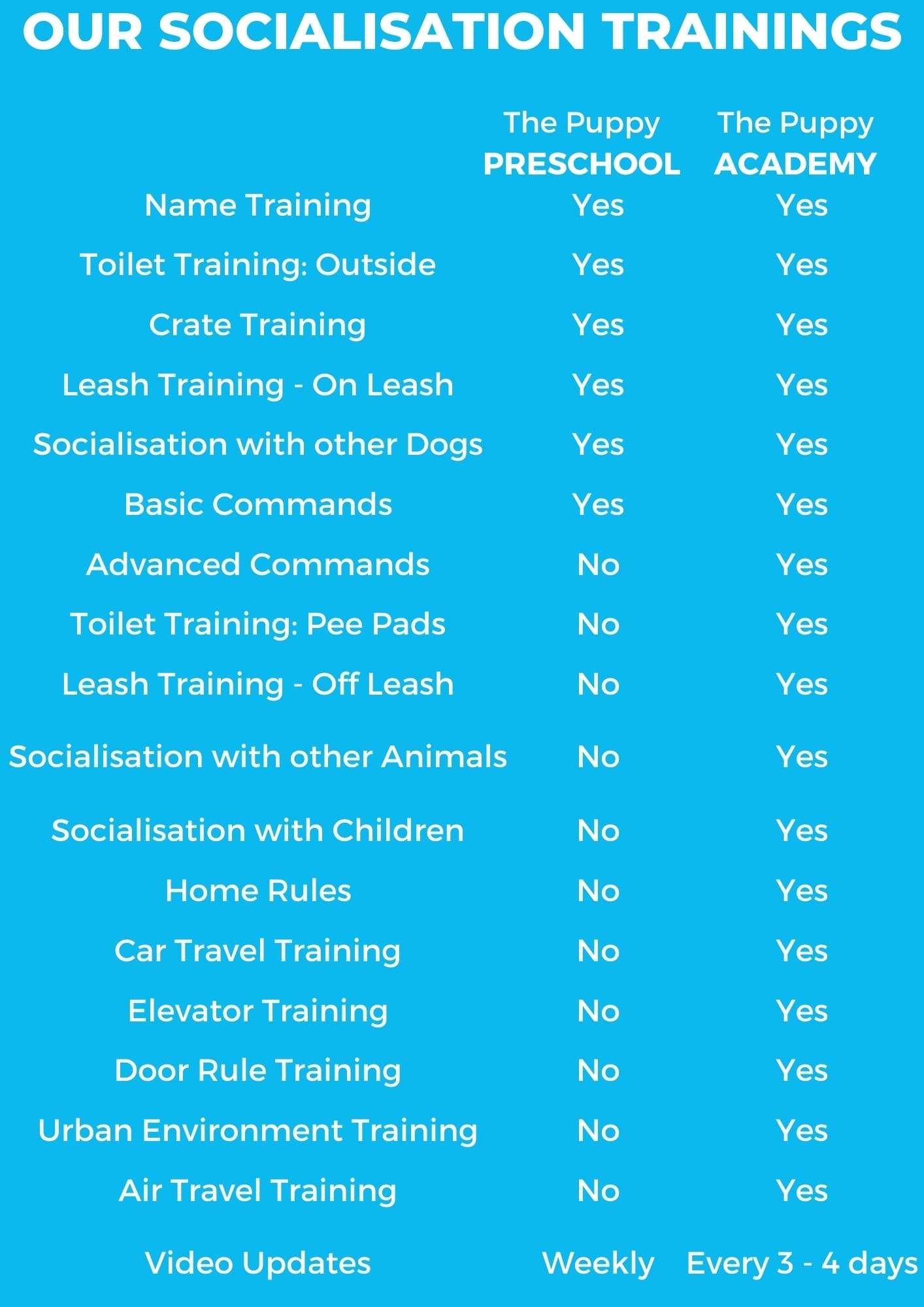Travelling
We make sure that our New Doggies travel in the safest and most comfortable way possible. Please note that each country and airline has its own strict regulations regarding international pet travel. Airplanes have dedicated climate-controlled, pressurized compartments that are designed to keep their canine passengers comfortable and safe. Each dog comes with a new airline-approved crate.
During the journey, New Doggies are provided with food and water. Having said that, the dog might still be thirsty after arrival, so please make sure to give the dog something to drink as soon as it is taken out of the crate. The bottom of the crate is lined with a thick layer of paper to absorb any in-flights accidents and keep the dog clean and dry. During its travels, your New Doggy is regularly inspected by an animal professional who cleans up the accidents and assists the New Doggy with whatever is needed.

Airline Approved Crate
Each country and each airline has strict regulations regarding international pet travel. Our FREE airline-approved crates comply with the International Air Transport Association’s (IATA) regulations. It is important that a crate must be well ventilated and large enough that your New Doggy can stand up, lie down and turn around freely. No part of the dog is allowed to protrude from the crate. It should also be secure and leak-proof. Sedation is neither allowed nor suggested due to the unpredictability of how the drugs will affect the dog at high altitudes.

Free ISO Microchip
All of our dogs come with a free standard ISO microchip. Every microchip is unique and can be activated using a scanner that will display the microchip’s assigned ID number.
The microchip is usually implanted under the loose skin between your dog’s shoulder blades. A microchip normally lasts for 25 years. The microchip is not a GPS tracking device and therefore cannot be used to track your dog’s location. You should register your New Doggy’s microchip at your local veterinarian at your earliest convenience. It is also important to keep your contact details in the microchip registration database up to date so you can be easily reached if your dog gets lost.
Microchip Standards
The idea behind microchipping is that when a lost dog is found, it is taken to an animal shelter or pet clinic where they can scan the dog for a microchip to reveal its ID number. It is important to note that there are ISO standard and non-ISO standard microchips. The difference is the radio-wave frequencies transmitted by the scanner in order to activate the microchip. The frequency of our ISO standard microchip is 134.2 kHz. In the U.S.A. there are 125 kHz and 128 kHz frequency microchips too. We also recommend using universal scanners called forward- and backward-reading scanners. These scanners detect all microchip frequencies (134.2 kHz, 125 kHz and 128 kHz) and therefore a chip in a lost dog is more likely to be detected. Forward-reading scanners only activate ISO standard (134.2 kHz) microchips, but will not detect non-ISO standard (125 kHz and 128 kHz) microchips.

Health Check
Our veterinarian checks every New Doggy again before departure. Our veterinarian performs a complete general physical examination that includes the followning:
- Mouth and teeth
- Ears
- Eyes
- Skin and hair
- Nose
- Neck
- Chest
- Heart (pulse and heart rate)
- Lungs and breathing
- Stomach
- Feet and nails
- Chin and jaw
- Genitals
- Temperature
- Weight
- General appearance
- Musculo-skeletal
- Joints
- Movement
Furthermore, there are animal friendly areas with a designated veterinarian in most international airports. The staff at these airports will examine, feed, water, exercise and take care of your New Doggy.

Puppy Vaccination Schedule
Our vaccination protocol adheres to a worldwide standard. We will register the vaccination history of the dog in its vaccination booklet. Dogs can only travel after getting all the necessary vaccines. The dog’s exact delivery time is calculated from the day it has received its Rabies vaccination shot. This period is defined according to the legislation imposed by the dog’s destination country.
*In some countries, Rabies vaccinations are accepted from 12 weeks of age. On such occasions, we will arrange for the Rabies vaccination as soon as possible so the puppy can become eligible for travel. Check out if we have detailed information about your country here.
** Some countries require a Rabies Antibody Titer Test (RATT) to be conducted at 15 weeks of age or 4 months old. In such occasions, the puppy will only be eligible for travel after testing immune to Rabies. You can find out more about rabies in this article.
A more detailed breakdown of vaccination schedules can be found in this article.

The Puppy Preschool
In this Puppy Training programme, your puppy will receive one hour of training per day with our Expert Trainer. It is the ideal program for those who wish to welcome home a puppy that knows the very basics, but wishes to teach the hardier stuff themselves. Their lessons will consist of socialisation skills, including:
- Name Training
- Outside Toilet Training
- On-Leash Training
- Socialisation with other dogs
- Crate Training
- Basic commands
Our Team will send you weekly updates on your puppy’s progress in the form of videos. At the end of the training, your puppy will receive a certificate as proof of completing the programme.
The Puppy Academy
This Training programme is extensive in nature. If you enrol your puppy in the Academy, your NewDoggy will live with the trainer for the duration of the program, being in training round-the-clock. By the end of this training, your puppy will be much better prepared to adapt to their new environment and you will have an easier time getting used to the newest member of your family. This programme will include:
- Name Training
- Outside Toilet Training
- Pee Pad Toilet Training
- On-Leash Training
- Off – Leash Training
- Crate Training
- Basic commands
- Advanced commands
- Socialisation with other dogs
- Socialisation with Children
- Socialisation with other animals
- Home Rules
- Door Rule Training
- Car Travel Training
- Elevator Training
- Urban Environment Training
Our Team will send you updates on your puppy’s progress in the form of videos every 3 to 4 days. At the end of the training, your puppy will don a graduation cap and receive a certificate as proof of completing the programme.
Looking to have your NewDoggy relocated? Contact our experts at www.expresspuppy.com .


















